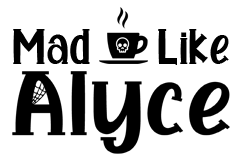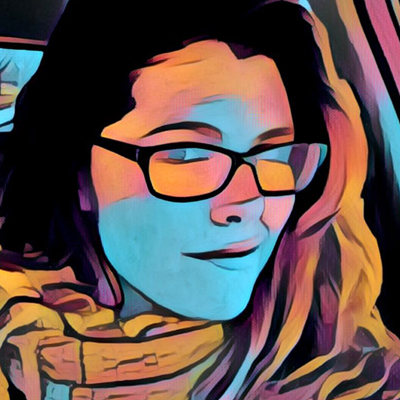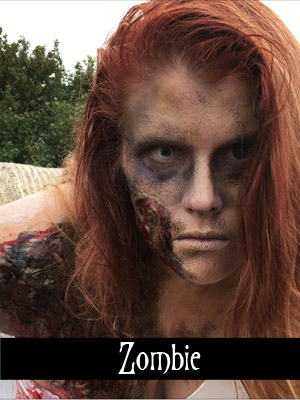In the beginning
My story, like the stories of most who have chronic pain, is very convoluted, emotional, and intertwined with other struggles in my life. While I didn’t know it at the time, while not caused by or dependent on it, my pain was indeed intertwined with my PTSD it in a very real way. But while on this journey, I considered it it’s own separate path, and with this in mind I decided to tell my chronic pain story as it’s own narrative.
My personal pain story also gets confusing as I have three different occurrences of chronic pain: fibromyalgia, chronic pain and chronic fatigue syndrome in my back and neck, and chronic pain and nerve damage in both arms. I think a lot of us with chronic pain experience it in multiple ways. That said, I feel as though we identify one as being the primary pain, whether it was the first, the most severe, or the one that pulled the rug out from under us. The pain that knocked me flat on my back end for years was my back and neck pain.
The first accident
My back and neck pain started when I was 14 after my first car accident…. yep, first. Of many, unfortunately, but we will get to them, no worries. I had been driving my dad’s old pickup truck after school, and had been feeling uncomfortable at how closely a semi truck was following me. When I attempted to slow down for a left turn (no turning lane) the semi struck me at full speed (65mph) three times, as I bounced forward and was struck again as he was unable to stop and was then sideswiped as the driver passed on the right, slamming into my passenger door to avoid hitting the guard rails next to the road.
During the first collision, my head snapped back and shattered the back window of the pickup, which in these old style vehicles is directly behind the driver. I shakily climbed from the vehicle, and without a phone, had to call my dad from the sherriff’s car. To this day, I am still astounded he did not call an ambulance. Instead, a nurse passing by on her way to her job at the hospital stopped and upon seeing my swollen face, told the sheriff she was taking me directly to the hospital, and instructed my dad to meet me at the ER. I left the hospital with my first prescription for pain meds and muscle relaxers.
Forgiving, though we cannot forget
At this point, I want to talk about forgiveness. When you have chronic pain, whether it is caused by an incident or by unlucky genetics, or as far as doctors can tell, caused by nothing at all… we struggle not to assign blame, and struggle to forgive. We struggle to forgive those that may have caused this. To those who could have taken action. To those who judge us though they will never understand. To those who pretend to understand, those who minimize, those who took advantage. Sometimes we are mad at God. Other times, we turn it inwards on ourselves.
In this particular case, I was mad at the sheriff. I was in his granddaughter’s class. I had spent evenings at his house getting ready for Halloween trick-or-treating with her over the years. He knew me on a first name basis. But he knew the late 70’s aged driver of the semi better. The accident, although I was rear-ended by a fully loaded semi that had been tailgating me for the last 10 miles, although he should have been paying enough attention, the accident was ruled as a no-fault.
While this wasn’t the accident that was the final straw in my condition, it was the first. There were many nights years later when I was doped to the gills with pain medication and yet still felt the tears running down my face in the dark as my back felt as though it was being eaten away by acid that I was so angry at the semi driver for not paying attention. At the sheriff for not calling an ambulance. It has taken a long time for me to realize that it doesn’t matter. What happened, happened. Being angry about it doesn’t help me heal. I have the right to be angry. I have the right to not forgive. I also have the right to let it go. Eventually, I did, and was a lot better for it in the long run.
Just know that this is normal… You have the right to grieve the person you used to be before pain. This is just a step in learning to love who you are now.
The second accident
Two years later, after a serious ice storm took out a majority of power in Eastern SD, I was driving home from school when I reached a mile long flat section of highway. The snow had built up on either side and the temperature was perfect for turning the snow rapidly blowing across the road into a half mile long sheet of ice.
I almost made it. Fishtailing to one side, I managed to straighten my jeep and was so proud… I could see the dry pavement up ahead, but started drifting towards the right hand ditch. My wheels caught the fresh snow in the ditch and my jeep rolled. I remember looking out the passenger window and seeing sky and land inverted. I recall having the split second thought, “My dad is going to KILL me!” before I slammed into the roof of the vehicle, and when the vehicle stopped rolling ( wheels down, thankfully), I was halfway below the steering wheel in the wheel well. Good time to find out your seat belts in your junker jeep don’t work.
It was certainly an interesting experience, and this time I DID get my ambulance. The deputy sheriff, after getting me out of my freezing jeep (the windshield had shattered, which let the bitter wind blow directly into the car), got me into a neck brace. My Dad beat the ambulance to the accident by 10 minutes. In the back of this ambulance, the rookie paramedic asked if my Dad and I were married, much to everyone’s amusement, especially the ambulance driver who knew my dad and thought it was hysterical. I learned that if the patient is stable, they will turn off the lights when the approach town (my accident was in the country) so as not to cause any more accidents with people who are unsure how to react in traffic. I left the hospital with another pain prescription, which took me a lot longer to get off of.
Invincibility complex
I think that many teenagers have an “invincibility complex”. Perhaps it is just an incredible faith in modern medicine, or just the fact that our bodies seem indestructible. There are terrifying words like “cancer” and “fatal car accidents”, but having walked away from both of my accidents, I felt just fine. I wanted to get back to my life, back to dance classes, and had little patience for physical therapy.
However, after this last accident I did have to seek professional help for my pain. I used a Tens unit for my back during school hours, and took a large prescription of muscle relaxers. I did finally go to a PT that I liked and also found a wonderful chiropractor that made a huge difference. I thought I was healed, so… I acted like it.
So when my dad asked if I wanted to race dirt track cars with him the summer after I graduated from High School, I was down! In hind sight, this was a pretty poor decision, but unfortunately, you don’t get to use hind sight when making these decisions. It sounded like fun, so I jumped in.
I don’t want to take away from the fact that racing side by side with my dad was a wonderful experience. I learned a ton about car mechanics, racing, and how a long list of speeding tickets doesn’t make you a good racer. But there is a good reason that dirt track racers use the phrase, “rubbin is racin”. You are literally getting into minor to moderate accidents EVERY SINGLE WEEKEND. Not surprisingly, my chiropractic visits began to increase in frequency.
Third time’s a charm
In my second season of racing, I had “THE accident”. Even as the worst accident so far, it still didn’t initially appear to be the dramatic life changing event that it soon turned out to be.
On a clay dirt racing track, small balls of clay are thrown from the tires in each “corner” of the track, and they gather near the top of each turn. This collection of clay balls is called “the marbles” since it is as though you are literally driving on marbles. No traction whatsoever. In the middle of a race, I was on the outside of another car going through turn four when the inside driver deliberately hit me to prevent me from passing. Hey, rubbin is racin. This time, however, I was pushed into the marbles, and slammed into the concrete track barrier at somewhere between 50 to 65 miles per hour. I managed to maneuver the car off of the track, and to avoid an ambulance fee, had my sister drive me right to the ER.
This time, I learned that you have to take X-rays of the C1 vertebra through the open mouth to make sure the mandible is out of the way. When this method fails, you can do a CT scan, and the nurses demonstrated the magnetic pull using a paperclip on a string, which I found incredibly cool in my doped up state. I left the ER for the third time with pain meds, but while I didn’t know it at the time, this accident would prove to be very different from those before it.
I went through all of the steps, wearing a neck brace for 2 weeks, then going through a month of PT. I did feel better for awhile. But within months of my accident, I started to experience intense neck pain. I upped my chiropractic visits, started doing massage therapy, and began taking pain medication when the pain was too bad. In less than a year, I was taking pain meds daily, and found the pain increasing in a maddening way, regardless of how much medication I took.
Chronic Pain: The Invisible Monster
We all have a unique way of describing our pain. I’ve had friends that suffered from migraines describe their pain like, “A hook up under the back of my skull,” or, “A blinding burst of pain,” or even, “an ice pick gouged above my eye.” With my back pain, it always felt like acid. Acid that had seeped into my bones, and was slowly eating away my muscles from within. Within a matter of months, the pain increased dramatically. I cannot tell you how many times I called my family crying, unable to be alone with the pain, afraid I was dying. I also cannot imagine being the person on the other end of that line, listening to someone you love suffering and having no way to help. I’m not surprised that my siblings stopped answering my calls. I’m forever grateful to my parents for continuing to pick up the phone. My dad even made trips to my school, an hour away to sleep on my futon, just to make sure I would be ok, even when he had to work at 6am the next morning.
The doctor visits continued to increase, as did the medication circus. Within a month of seeking treatment, I had an hourly pill counter on my bedside table, and felt like the crazy grandma drawing designs with her pills on “Grandma’s Boy”. My family doctor quickly ran out of ideas on how to treat me, and after two failed attempts to get me into the Mayo Clinic, I was referred down to specialists in Sioux Falls. From here, I was run through a gauntlet of blood, neurological, and MRI tests to determine what might be wrong. Just a few days shy of Christmas, I received the call. There was nothing they could identify as the source of my pain. They believed I was in pain, but there was nothing that could surgically or medicinally be treated to solve it. They could only treat the symptoms. After months of searching, I received the diagnosis of Chronic Pain Syndrome and Chronic Fatigue Syndrome. Essentially, this meant the end of the road. No more tests. No solutions.
This was such an incredibly hard diagnosis to swallow. Something I think a lot of chronic pain patients want is an answer to why they are suffering. We have this desperate hope that someday, a doctor will find some tiny thing and say “Eureka! It was this all along!” Then have some procedure or medication that will alleviate our pain and suffering. For most of us… this will never happen. And even for those of us who do get a new diagnosis… it often doesn’t change a thing in either the treatment plan or in our pain.
The next part of my journey was quite difficult, as the pain didn’t subside, but I was struggling with so many other things (including PTSD but that is it’s own story). A big part of it was pride and the crushing defeat of losing everything I had been working towards. I was in college and had a great job, and my abilities to handle either, much less both, were slim to none. In the spring semester after my diagnosis, I had many of my professors tell me I should drop out for a year. I tried to keep the job, and had my supervisor tell me a few months in, “I thought you would be better by now” as if this illness was my fault. In truth, I wasn’t able to do the job as I should have, and should have resigned during the Christmas break. Again, hind sight is 20/20.
In the ensuing months, my self esteem crashed as I ultimately lost that job, ended a destructive relationship, gained 30+ pounds, began experiencing panic attacks, signed up for disability on campus, could barely manage my 6 credit semester, and took a new job that was just horrifyingly toxic. I met a man who pretended to understand my illness, but turned them against me as weapons and led me down a whole new path of hell.
I get by with a little help from my friends
Even through the struggles, I began to make some positive changes. I switched jobs yet again, and found myself under the protective angels wings of the women in my new department. These women I thank to this day for the career I have now. They supported me through one of the most difficult times of my life, and if they had judgements, they kept it to themselves and showed me nothing but love and compassion. We need more people like this on this earth.
I also had been working with my doctor and we had determined that over the last 18 months of medication, nothing was changing. I made the decision that If I was going to live with this pain regardless, I would try to do so without the side effects the medications brought to the party, which were often just as inhibiting as the pain itself. After multiple attempts, My doctor finally helped me to get accepted to the Mayo Clinic in their Pain Rehabilitation Center, which is a rehab facility for chronic pain patients who have become dependent and addicted to prescription pain medications. This is a whole other story, which I promise to tell in detail. From this clinic, I not only got off of all pain medications, but met an incredible group of fellow chronic pain warriors. These people saw me for who I was, and helped me to see the person I had lost so many years ago. They helped me realize that the person I was before pain wasn’t gone. She was just different. And even if the pain made me physically weaker, this girl was ultimately much stronger. I was proud of myself for the first time in years.
Life after pain medication
There is a reason that the Mayo Clinic has rehab uniquely for pain patients, and that this clinic is part of the Psychology department. Perhaps the most terrifying part of rehab was knowing that we were eliminating the shield of drugs we had hid behind for so many years and knowing that we were going to meet the monster we had hid from head on. This was probably one of the hardest things I have ever done. After leaving the clinic, I had to continue to take precautions, but I had learned a great many tools along the way. And this time around, I had the confidence I needed to carry on. I left my abusive ex within a week of finishing rehab. Just three months later I graduated from college and moved across the state to a fantastic job. I thought that part of my story was over. Instead of finishing the book, however, I had just finished a chapter… and was turning a page to where my PTSD began it’s entrance.
Where am I now?
I would love to say that now that I am free from pain medication, my life is daisies and butterflies and I am pain free, but if you have been reading for awhile, you will know this is not true. I certainly am able to manage much better than I did during those turbulent years in the beginning, more than seven years ago. I am so incredibly thankful that I am no longer a slave to those bitter pills. But there are times that I miss them… those days when I still talk myself through my work day in 5 minute intervals… “just 5 more minutes. You can make it just 5 more minutes.” The days when I barely make it home, then struggle through a quick walk with my dog, telling myself with every step that I just have to get back to the apartment, and then I can sleep.
I am lucky that those days are no longer the norm. Even after finishing my rehab, I took far more ibuprofen and acetaminophen that I should have, and kept Salon Pas in the black, often wearing more up to 6 patches at a time. The idea of going through an entire day without taking OTC meds or using a heat pad or Salon Pas patch was unforeseeable, yet, I have started to realize more often than than I had ever thought possible that I had done just that. I go through cycles where I’m doing well, and cycles where I am barely able to keep from crying. But every day I move forward.
It took me over 6 years to get where I am today and I didn’t do it without help, support, and love from those around me. I took my greatest steps forward when I realized that I wasn’t alone, and had the support of other chronic pain warriors. Chronic pain can be incredibly lonely, and it is my hope that with this blog, it doesn’t always have to be.

 Hi! I'm Alyce.
Hi! I'm Alyce. 




